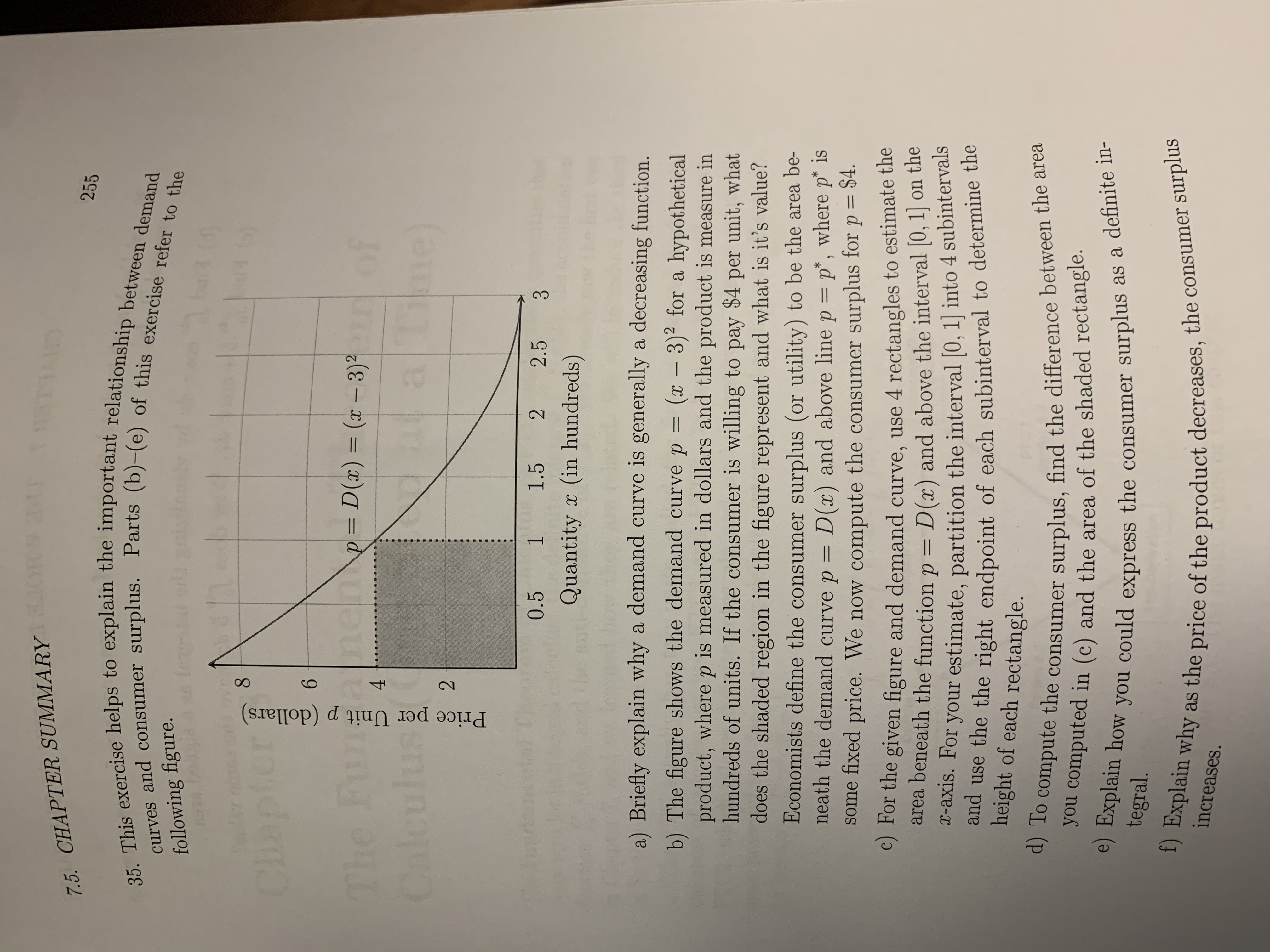Consumer Surplus It is often convenient to think of the price of a product as a function of the quantity of the product used by the consumer. That is, p = D(x). We call the graph of p = D(x) the demand curve and it shows the price per unit that the consumer is willing to pay for x units of a product. Another term used in economics is utility or consumer surplus. When a consumer receives x units of a product for a price less than what they are willing to pay, they derive a certain amount of pleasure, or utility, U, from the purchase. The consumer surplus is a measure of the utility.7.5. CHAPTER SUMMARY 255 35. This exercise helps to explain the important relationship between demand following figure. curves and consumer surplus. Parts (b)-(e) of this exercise refer to the Chapter 18 6 The Fun p = D(2) = (2-3)2 4 of Calculus Price per Unit p (dollars) 2 0.5 1 1.5 2 2.5 3 the got Quantity x (in hundreds) a) Briefly explain why a demand curve is generally a decreasing function. b) The figure shows the demand curve p = (x - 3)2 for a hypothetical product, where p is measured in dollars and the product is measure in hundreds of units. If the consumer is willing to pay $4 per unit, what does the shaded region in the figure represent and what is it's value? Economists define the consumer surplus (or utility) to be the area be- neath the demand curve p = D(x) and above line p = p*, where p* is some fixed price. We now compute the consumer surplus for p = $4. c) For the given figure and demand curve, use 4 rectangles to estimate the area beneath the function p = D(x) and above the interval [0, 1] on the x-axis. For your estimate, partition the interval [0, 1] into 4 subintervals and use the the right endpoint of each subinterval to determine the height of each rectangle. d) To compute the consumer surplus, find the difference between the area you computed in (c) and the area of the shaded rectangle. e) Explain how you could express the consumer surplus as a definite in- tegral. f) Explain why as the price of the product decreases, the consumer surplus increases








